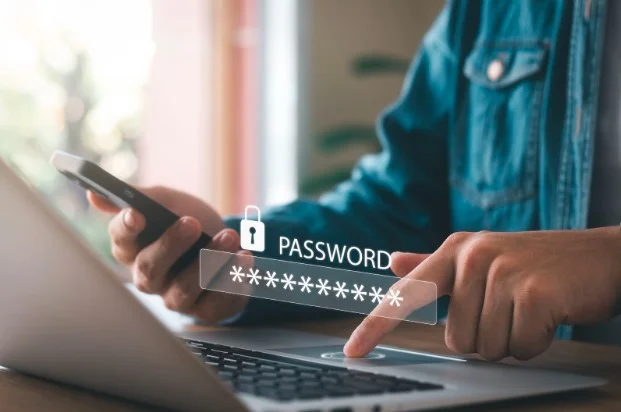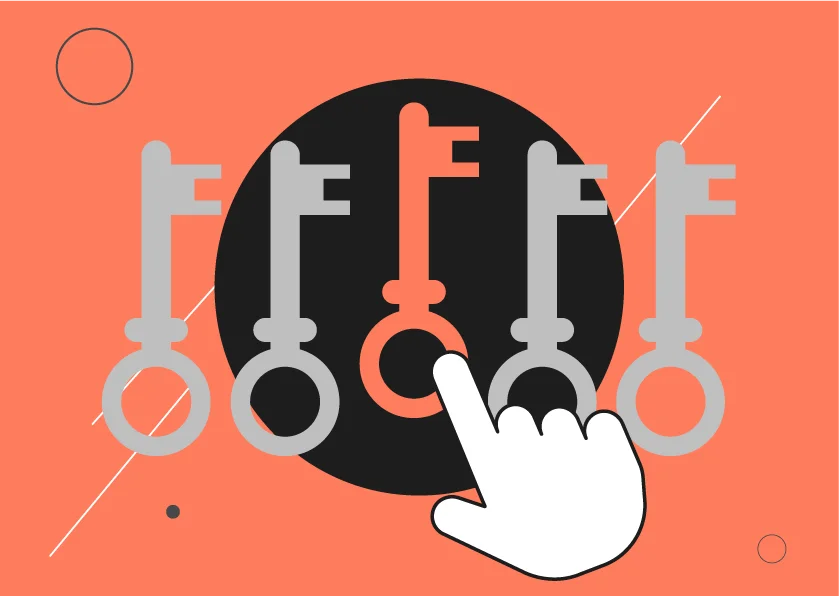In many businesses, “sharing” a password often means showing it to someone, and that’s where problems start. You set up a secure system, but then a new employee or a client needs access. What happens next? You might scribble the credentials on a sticky note, send it in an email, or pick something simple you can say over the phone. All of these shortcuts make it easier for hackers or scammers to break in.
Tools like password managers can’t eliminate all risks- people still make errors, but they’re one of the safest ways to protect your data, customer info, and important business details.
The State of Password Sharing in Small Businesses
Even when safer tools are available, many small businesses still share sensitive data with clients or employees the old-fashioned and risky – way: via chat, email, text message, and of course, the most traditional method of all a sticky piece of paper.
A study found that many companies still use weak passwords like “123456789” or “P@ssw0rd”, and they often reuse the same “ultimate key” in multiple places. This means if one password gets leaked, a hacker might get into everything.
Example: Dropbox Data Breach (2012)
What happened: An employee’s reused password, previously compromised on another site, was used to access Dropbox’s systems.
Consequences: The login credentials of more than 68 million users were exposed on the Dark Web.More than half of companies expect people just to remember their login credentials. But let’s be honest, most of us don’t have perfect memories. So we end up picking easy passwords that are also easy to guess without realizing all the consequences if this information gets into the hands of bad actors.

Example: KNP Logistics (2023)
What happened: A weak employee password was compromised in a brute-force attack.
Consequences: The resulting financial losses and operational instability ultimately forced the company to shut down, as it was unable to recover.
Key Pitfalls and Why Secure Sharing Matters
So, what are the risks if your password falls into the wrong hands?
- Unauthorized Access:
- Identity theft
- Loss of control over your account
- Unauthorized transactions
- Data breaches and exposure on the Dark Web
- Malicious Activity:
- Sending scam or harmful messages
- Inappropriate activity on social media carried out in the name of a hacked user – whether it’s a personal or business account
Poor security practices can have severe consequences-from damaged reputation and operational disruptions to financial losses and legal issues. Even technical oversights like website errors can contribute to security risks, opening doors to serious vulnerabilities.
Providing access to sensitive information the right way doesn’t just protect your data-it helps protect your money, your reputation, and your ability to keep your business running smoothly.
Best Practices for Secure Password Sharing
1. Utilize tools with Sharing Features
Password managers like Sticky Password, LastPass, and Keeper offer secure sharing functionalities:
- Encrypted Sharing: Share without exposing the actual login details .
- Access Control: Set permissions for who can edit shared data .
For instance, Sticky Password provides a secure feature that lets businesses grant access management without compromising security.
2. Implement Multi-Factor Authentication (MFA)
Two-step login (also called multi-factor authentication or MFA or 2FA) adds extra protection. Even if someone gets your password, they still need a second code (like one sent to your phone) to log in. It might seem like a small step, but it goes a long way in keeping you safe. Using an Identity and Access Management (IAM) solution can make it easier to enforce MFA across your organization.
3. Teach Your Team About Secure Access Practices
Make sure your employees know the importance that you as the business owner place on secure access. Providing the right tools as well as security awareness training sessions can help employees understand the importance of credential security and the risks associated with poor practices. Topics should include recognizing phishing attempts, creating strong passwords, and the dangers of reusing them. After all, when running a business, it’s essential to treat cybersecurity as a key component of both digital growth and marketing strategy.
4. Don’t Send Passwords Over Email or Chat
Never send login details through email, chat, or write them on sticky notes. It might be quick, but it’s sloppy and also risky. Hackers can easily grab that information. A password manager helps you store and share login details safely without exposing them. Always use a secure tool to share instead.
Example: Wright Hotels (2015)
What happened: An attacker gained access to the owner’s email account, which contained extensive correspondence with the bookkeeper.
Consequences: This information was used to commit wire fraud, resulting in the theft of over $1 million from the company’s bank accounts.
Tools to Consider for Secure Credential Sharing
If you’re looking for a tool to share login information safely, here are some good options:
- Sticky Password: Offers secure sharing, encrypted storage, and supports multiple platforms.
- LastPass: Combines user management, permission-based sharing, and robust admin tools in one platform.
- Keeper: Offers protected sharing capabilities, access controls based on roles, and reporting features to support compliance.
These tools not only facilitate secure sharing but also help in managing and organizing credentials efficiently.
Conclusion
Sharing login credentials safely isn’t just a tech thing- it’s a smart move to protect your small business. Using tools like password managers, turning on two-step login, and teaching your team good habits can help you avoid data leaks, lost time, and big headaches.
Bottom line? Securely sharing sensitive information helps maintain a strong and smoothly operating business.




